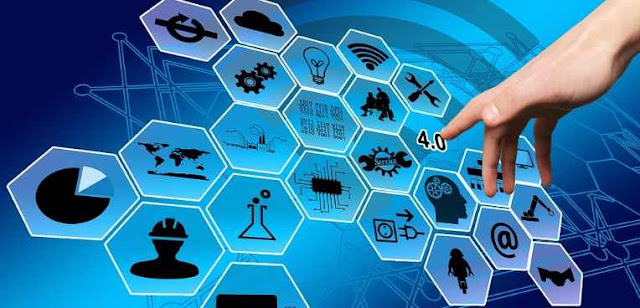Information and communication technology (ICT) contains all technologies related to information handling. These treatments include retrieval, collection, processing, storage, dissemination and presentation of information.
 |
| Technology Four Point Zero |
So, ICT is a technology that relates to capturing, collecting, processing, storing, disseminating, and presenting the information.
Definition of Information and Communication Technology
From the wording, information and communication technology is composed of 3 (three) words, each with its own meaning.The first word, technology, means development and application of tools, machines, materials, and processes that help humans solve their problems. The term technology often illustrates the discovery of new tools that use scientific discovery principles and processes.
The second and third words, i.e. information and communication, are closely related to the data. Information means the results of the processing, manipulation, and organization of a group of data that gives knowledge to its users.
Communication is a process of conveying information (messages, ideas, ideas) from one party to the other in order to influence the mutual relationship between the parties.
So it can be concluded that information and communication technology is the result of human engineering to the process of conveying information and the process of delivering messages (ideas, ideas) from one party to the other so that the faster, wider the spread, and the longer its storage.
Its application in the educational/learning environment can be said that ICT includes the hardware, software, content contents and infrastructure that function with regards to retrieval, acquisition, processing, storage, dissemination, and presentation of information.
The understanding of ICT is no longer limited to sophisticated (sophisticated) things, such as computers and the Internet, but also includes conventional, such as printed materials, audiotapes, Overhead transparency (OHT)/Overhead Projector (OHP), sound slides, radio, and TV.
Explanation of ICT tools can be explained as follows:
- Computer, which is a useful tool to process data into information according to the procedure previously formulated.
- LCD Projector (Liquid Crystal Display), which is a tool to display information originating from a computer or other media information such as DVD Player.
- OHP (Over Head Projector), which is a tool to display static information written on the transparency plastic.
- Radio, which is the receiver of information originating from the transmitter station in the form of an electromagnet wave that carries sound information.
- Television, which is the information receiver that is in the form of image and sound. Television comes from the word Tele (FAR) and vision (visible/visual).
- Internet, which is a connector between computers through a global network that functions as an information exchange.
- GPS (Global Positioning System), i.e. the information tool serves to determine the location, direction or speed of objects that are on the surface of the Earth.
- Facsimile, ie a tool to send and receive documents through the telephone line. Documents sent with facsimile are exactly the same as the original document.
- Communication satellites, which are man-made objects that are placed in space for telecommunication purposes.
- Phone, which is a useful communication tool to send voice data through electrical signals.
- Mobile or mobile phone, which is a mobile communication tool to send voice data.
Benefits of Information Technology and communication in education
Broadly, TIK has four roles as follows:
1. Expanding access to education
ICT can unlock broader access to education. With ICT, learning activities are no longer confined to the walls of the classrooms, but can take place anywhere and whenever the student's origin is connected to the Internet.
2. Improve education efficiency
Efficiency in education means education can be delivered with the best quality and towards optimal results without the expensive cost. ICT utilization allows that to happen. Through the use of ICT, learners can conduct academic activities in accordance with the curriculum even if they do not spend their time in class.
In addition to students who have self-discipline and high motivation for learning, the utilization of ICT can accelerate the process to achieve mastery level, and broaden the learning options according to the ability and condition of the students through Self-learning.
3. Improve the Teaching learning process
ICT with all its potential and ability to present varied materials in various formats capable of delivering a better learning process to provide more optimal learning outcomes in learners.
It is common knowledge that when compared to following conventional in-person learning and monotonous lectures in the classroom, learners will have an interest in learning through media that can deliver a variety of formats such as images, sounds, videos, animations, or interactive programs.
4. Improve the management system
In terms of education management and administration, ICT can be used to help manage and process education and learning data, such as the state of students and teachers, the results of students ' assessment, finance, state of facilities and Infrastructure of an educational institution, etc.
This is done in order to produce an educational institution and a quality learning activity that is able to provide accurate education data, easy to use, and obtained in a timely manner.


